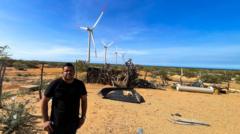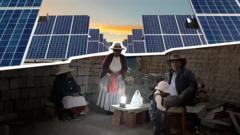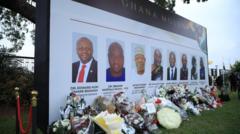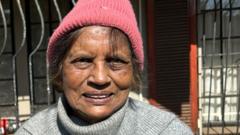In La Guajira, Colombia, wind farms promise clean energy and economic growth, yet they disrupt the deeply-rooted connection of the Wayuu indigenous group to their land and culture. While some community members see potential benefits, widespread concerns over transparency and environmental impacts have led to divisions and conflicts among the Wayuu.
Conflict Over Clean Energy: The Wind Farm Dilemma in La Guajira

Conflict Over Clean Energy: The Wind Farm Dilemma in La Guajira
Indigenous Wayuu communities face challenges as Colombia's wind energy initiatives disrupt their cultural and environmental landscape.
In La Guajira, Colombia, the landscape has drastically changed with the advent of wind energy projects. Towering wind turbines, part of the country's push towards renewable energy, have brought both development opportunities and tensions for the indigenous Wayuu community. Residents like José Luis Iguarán, who have lived on the arid peninsula for generations, now find their traditional way of life threatened by the burgeoning energy sector.
La Guajira's unique geological conditions have made it an attractive location for renewable energy projects, with multiple wind farms already operational and many more under construction. Iguarán laments the intrusion of wind turbines on their ancestral territory: “You wake up and suddenly you no longer see the trees. Instead, you see and hear the turbines.” The plan to harness wind energy here has ignited a complex conversation about the balance between progress and preservation.
Although the energy produced by projects like Guajira 1 is renewable, the social and cultural ramifications are significant. The Wayuu, who view dreams as sacred connections to their ancestors and the spiritual realm, report disturbances caused by the relentless whir of turbines. The clash between modern energy demands and traditional beliefs is stark, with community members expressing concerns over declining cultural integrity.
The energy company Isagen, operating in the area, has pledged to benefit the local communities through initiatives aimed at improving infrastructure and providing financial compensation. Their agreements include annual fees for land use and a share of revenue from carbon credits. Despite these incentives, discontent simmers among some Wayuu who feel excluded from negotiations or deprived of fair compensation. Aaron Laguna, a local fisherman, highlights the discrepancies in agreements: “Bad negotiations are made, and the resources given [to us] aren't well managed by locals.”
The tension surrounding wind energy projects has resulted in not only community divisions but also ongoing protests, slowdowns, and, at times, violence. The cultural disconnect is profound; for the Wayuu, the winds are living entities, integral to their cosmology, while corporate entities see them merely as resources for profit and energy output. This fundamental clash complicates negotiations and overall project execution.
As energy companies like AES Colombia invest in the region, they acknowledge the importance of engaging with local communities, emphasizing that resolving conflicts requires government involvement. Local residents like Laguna yearn for equitable access to resources and improved basic services, such as water and electricity, but are often left in the dark with consistent structural neglect from the state.
Their challenges persist: while local wind farms could power homes far from La Guajira, the indigenous community remains reliant on outdated and inadequate energy sources. The promised prosperity of wind farms feels distant, casting doubt on whether the Wayuu will be able to share in the future they are currently powering. As discussions continue, the contrasting desires and needs of the Wayuu and energy companies remain at the forefront of this transformative yet challenging moment in Colombia's environmental and cultural landscape.



















